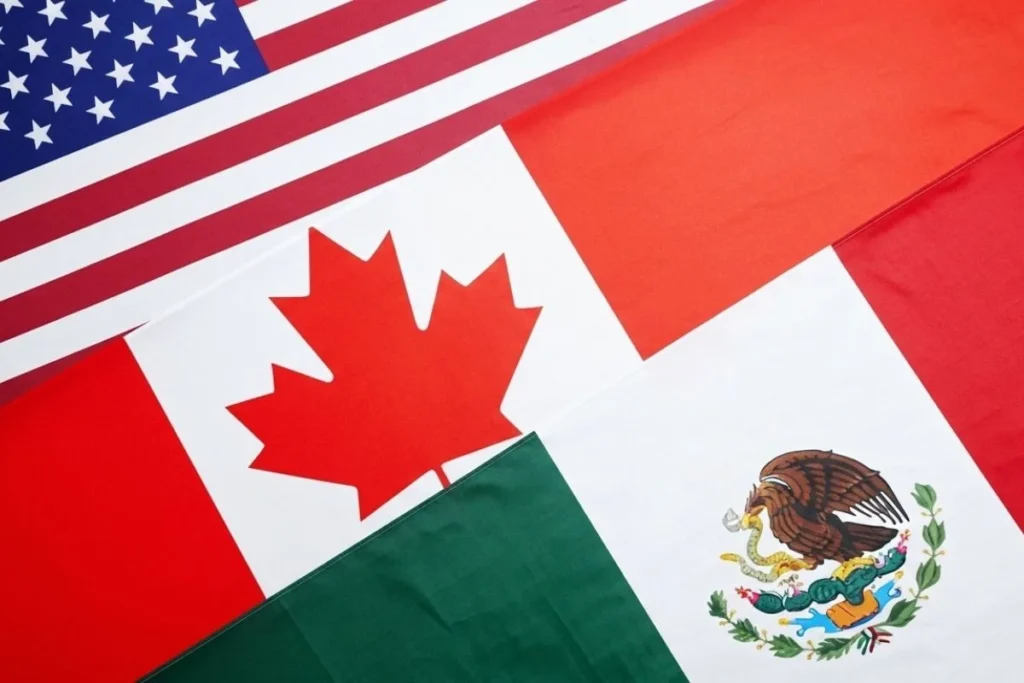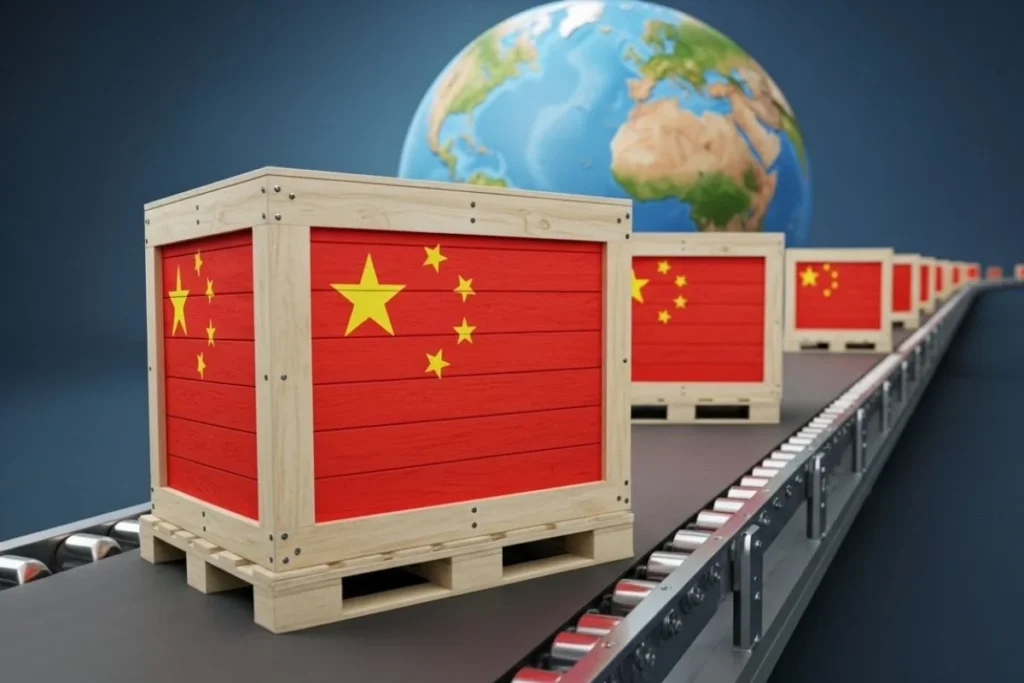How USMCA 2026 Review Could Reshape North American Trade Rules? The 2026 USMCA review stands as a pivotal moment for North American trade. We’re talking about $1.93 trillion in goods and services moving between the three countries. This required assessment might alter the guidelines controlling international business practices.
Directors of trade compliance are under pressure to have their businesses ready for possible changes. The review could lead to renewal, modifications, or even termination, and any of these outcomes will affect cross-border supply chains, compliance requirements, and how companies compete across the continent.
USMCA 2026 Review Mechanism
The USMCA has a unique “sunset clause” that requires a formal review six years after implementation. Should all three nations refuse to proceed, the agreement automatically ends after sixteen years.
The USMCA 2026 joint review will evaluate how well the agreement is working and decide its future. Unlike most trade agreements, which run indefinitely, this one includes a built-in deadline that generates both possibilities and uncertainty.
What’s at stake is that certainty. The review’s scope is still unclear, so depending on political priorities and economic conditions, it may result in minor adjustments or a redesign.

What Could Change
During the review, everything is on the table:
- Tariff schedules and tariff differentials
- Labor enforcement provisions
- Digital trade governance rules
- Rules of origin and regional value content thresholds
Countries are free to propose termination, amendments, or extensions. Technical evaluations will focus on how well things are operating, but political factors will probably guide the most important decisions.
Key Areas Most Likely to Underlie Review Scrutiny
Rules of Origin and Regional Value Content
Automotive rules of origin requirements—mandating 75% North American content, and U.S. officials may push for even stricter requirements to reduce reliance on Asian and European components.
This isn’t just about cars. Other manufacturing sectors could see similar changes to strengthen North American supply chains:
- Steel and aluminum
- Electronics
- Other strategic industries
Labor Standards and Enforcement
With its labor rules, particularly Mexico’s labor reform pledges, the USMCA broke new ground. The review will assess how well these are working.
The Rapid Response Labor Mechanism has shown some success but also revealed challenges that need addressing. U.S. stakeholders may push for:
- Expanded wage requirements beyond automotive
- Stronger enforcement mechanisms
- Solutions to persistent labor cost differentials
Digital Trade and Data Governance
When the USMCA was negotiated, its digital trade chapter was cutting-edge. Technology changes quickly, though; thus, the agreement might have to be changed to match.
Areas that need modernization:
- Cross-border data flows
- Digital service taxes
- Platform regulation
- AI governance
- Cryptocurrency regulations
- Digital identity frameworks
The original agreement hardly addressed these last three subjects; thus, perhaps fresh provisions are needed.
China-Related Provisions and Supply Chain Security
This is where things get geopolitical. The review will likely strengthen measures to prevent tariff circumvention through Mexico and Canada. The goal: reduce North American dependence on Chinese manufacturing.
Supply chain security provisions may expand to cover:
- Critical minerals
- Semiconductor production
- Other strategic sectors are central to economic security
Mexico has attracted $37 billion in foreign direct investment—nearly half from the U.S (2023-2024), according to Wilson Center analysis. Rather than providing a backdoor for non-regional producers, stakeholders want to see this investment strengthen North American integration.

Potential Scenarios and Business Impacts
- Scenario 1: Status quo extension. A simple extension would guarantee certainty but would miss chances to solve implementation difficulties.
- Scenario 2: Targeted modifications. While preserving general stability, targeted amendments to particular clauses could improve the agreement. This middle-path approach appeals to many business stakeholders seeking predictability with improvements.
- Scenario 3: Comprehensive renegotiation. Although it would cause uncertainty, a complete reopening of the agreement would solve basic structural problems. This scenario presents the highest risk for supply chain disruption.
- Scenario 4: Termination. Though improbable, a lack of agreement would cause a return to WTO guidelines, sharply raising tariffs and complicating North American compliance.
Strategic Preparation Steps for Trade Compliance Directors
Trade compliance directors need to start preparing today—regardless of how things turn out. These actions will enable you to spot fresh prospects and strengthen your resistance against possible interruptions.
Audit and Document Your Supply Chains
Map everything out. Conduct a comprehensive review of your supply chains to identify:
- Which processes depend on USMCA rules
- Where you’re vulnerable to rule changes
- Gaps in your current documentation
Strengthen your paperwork. Review and upgrade your documentation systems, especially for rules of origin certification. Focus on:
- Verification readiness
- Clean audit trails
- Easy-to-access records
If you have complex cross-border operations, consider working with specialized customs brokerage services in Mexico. They can help you document compliance with both current requirements and potential future changes.
Stakeholder Engagement and Advocacy
- Join the right groups. Identify industry associations and coalitions that are working on USMCA review priorities that matter to your business.
- Prepare your position. There will be public comment periods. Get ready by developing clear position papers on provisions that affect your operations. Be specific about:
- What works
- What doesn’t
- What you need to succeed
- Talk to trade officials directly. Don’t be shy about communicating your specific concerns and recommendations. Your real-world implementation experience matters.
Compliance System Evaluation
- Check your infrastructure. Assess your current trade compliance preparation and infrastructure’s adaptability to potential regulatory changes.
- Invest in technology. Identify upgrades needed to improve:
- Tracking capabilities
- Reporting systems
- Verification processes
- Train your team. Develop training programs now so your staff is ready for evolving compliance requirements. Don’t wait until changes are announced.
Timeline and Key Milestones to Monitor
Pre-Review Phase (2024-2025)
What’s happening now:
- Government agencies are gathering stakeholder input
- Trade officials are developing negotiating positions
- The U.S. Trade Representative has announced public hearings and written comment opportunities
Industry groups are already mobilizing. As one industry statement puts it: “An early confirmation of the USMCA’s extension would unlock over $20 billion in new American investments immediately, while each month of uncertainty delays site selection and technology development.”
Formal Review Period (2026)
What to expect:
- The joint review committee conducts its official assessment
- Public hearings and technical working groups convene
- Countries exchange initial positions
- Negotiations begin on potential modifications
Implementation Phase (2027+)
What happens after:
- Any agreed changes must go through domestic ratification in all three countries
- Businesses will need transition periods to adapt to new requirements
- New compliance systems and processes roll out
The earlier you start preparing, the better positioned you’ll be to handle whatever comes out of the review.
How EP Logistics Can Support Your USMCA Compliance Strategy
As a logistics company El Paso with extensive cross-border expertise, EP Logistics helps companies handle USMCA compliance challenges with confidence.
What we offer?
- Customs brokerage services. Our integrated approach ensures accurate documentation and classification, reducing your compliance risks during this uncertain period.
- Strategic warehouse locations. We have facilities on both sides of the US-Mexico border, giving you flexible storage and distribution options that can adapt if rules of origin requirements change.
- Up-to-date regulatory expertise. Our team stays on top of regulatory developments and can help you understand how to qualify for USMCA benefits—both under current rules and potential future scenarios.

The Bottom Line
What’s at stake? A market of over 500 million people representing 30% of global GDP, according to CSIS analysis. The outcome will shape North American commerce for years to come.
What you should do now:
- Audit your supply chains
- Engage with stakeholders
- Strengthen your compliance systems
Forward-thinking organizations that take these steps can minimize disruption and position themselves to succeed in the evolving trade landscape.
The winners will be companies that see the review not just as a regulatory hurdle, but as a strategic opportunity to strengthen their competitive position in the integrated North American market.



